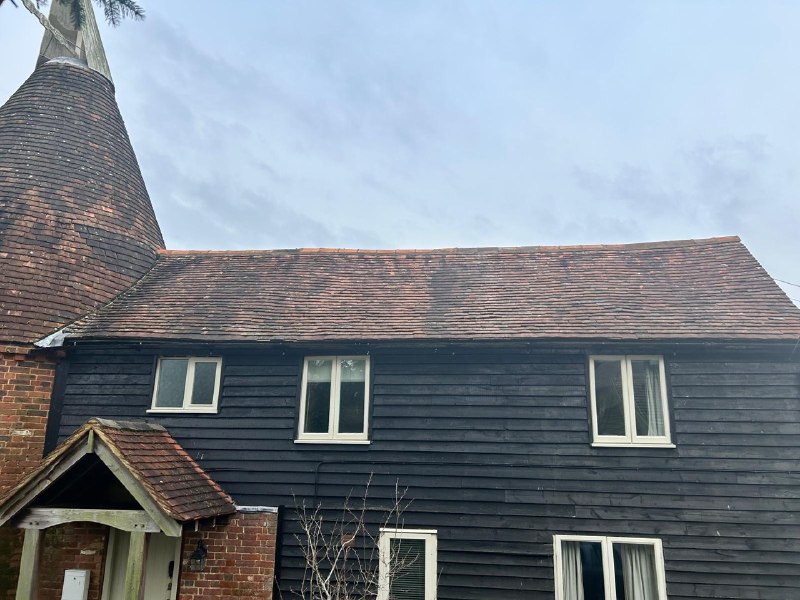Emergency Roof Repair Techniques for Pitched Roofs
Introduction: Maintaining the integrity of your pitched roof is crucial to ensuring the safety and comfort of your home. Unexpected damage can occur due to severe weather conditions, falling debris, or wear and tear over time. At LPO Roofing Kempston, we understand the importance of prompt and effective roof repairs to prevent further damage and maintain your home’s value. This blog post will explore emergency roof repair techniques for pitched roofs, providing you with the essential knowledge to handle roofing emergencies effectively.
1. Identifying the Damage
Before initiating any repair, it’s vital to identify the type and extent of the damage. Common issues with pitched roofs include:
- Missing or Damaged Shingles: Often caused by high winds, hail, or falling branches.
- Leaks: Indicated by water stains on ceilings or walls, often due to damaged flashing or shingles.
- Sagging: A sign of structural issues or water damage.
- Debris Accumulation: Branches, leaves, or other debris can clog gutters and damage shingles.
Conduct a thorough inspection, but ensure your safety by avoiding walking on a damaged roof. If necessary, use binoculars or a drone for a closer look.
2. Temporary Shingle Repairs
If you notice missing or damaged shingles, a temporary fix can prevent water from entering your home until professional repairs can be made. Here’s how to temporarily repair shingles:
- Clean the Area: Remove any debris or loose shingle fragments.
- Replace or Secure Shingles: You can temporarily nail them in place if you have spare shingles. If not, secure the damaged shingles with roofing cement.
- Seal the Edges: Apply roofing cement under the edges of the shingles to prevent wind from lifting them.
These steps provide a quick fix, but professional replacement is recommended for long-term durability.
3. Addressing Leaks
Leaks are among the most urgent roofing issues. To temporarily fix a leak:
- Locate the Source: Trace the leak from the inside to identify the entry point.
- Apply Roofing Tape: Use roofing tape to cover small cracks or holes.
- Use a Tarp: Cover the affected area with a waterproof tarp for larger leaks. Secure it with nails or roofing cement to keep it in place.
- Seal with Roofing Cement: Apply roofing cement around the tarp’s edges to enhance the seal.
These measures can prevent further water damage until a professional repair can be arranged.
4. Clearing Debris
Debris on your roof can cause significant damage if not addressed promptly. To clear debris safely:
- Use a Roof Rake: A roof rake lets you remove debris from the ground, reducing the risk of injury.
- Clear Gutters and Downspouts: Ensure gutters and downspouts are debris-free to prevent water accumulation.
- Inspect for Damage: After clearing debris, inspect the roof for any signs of damage caused by the debris.
Keeping your roof clear of debris helps prevent damage and maintains proper drainage.
5. Reinforcing Flashing
Flashing around chimneys, vents, and skylights can become loose or damaged, leading to leaks. To reinforce flashing:
- Check for Loose Flashing: Inspect the flashing for gaps, cracks, or loose sections.
- Re-seal with Roofing Cement: Apply roofing cement to secure loose flashing and seal any gaps.
- Use Roofing Tape: For immediate reinforcement, apply roofing tape over damaged areas of the flashing.
Properly maintained flashing is crucial for preventing leaks in vulnerable areas of your roof.
6. Handling Sagging Roofs
A sagging roof indicates serious structural issues and requires immediate attention. For temporary support:
- Identify the Problem Area: Locate the sagging section from both the inside and outside.
- Provide Temporary Support: Use adjustable braces or wooden beams to support the sagging area inside the attic.
- Cover with a Tarp: On the outside, cover the sagging area with a tarp to protect against further water damage.
Seek professional assistance promptly to address the underlying structural issues causing the sagging.
7. Professional Assistance
While temporary fixes can provide immediate relief, professional repairs are essential for long-term solutions. At LPO Roofing Kempston, our experienced team is equipped to handle all pitched roof repairs. We offer:
- Thorough Inspections: Comprehensive assessments to identify all areas of damage.
- Expert Repairs: Skilled technicians using high-quality materials for durable repairs.
- Preventative Maintenance: Regular maintenance services to prevent future issues and extend the lifespan of your roof.
Conclusion: Emergency roof repairs are vital for protecting your home and preventing further damage. By following these techniques, you can manage immediate issues effectively.
Call us on: 01234 676 690
Click here to find out more about LPO Roofing Kempston
Click here to complete our contact form and see how we can help you with your roofing needs.

